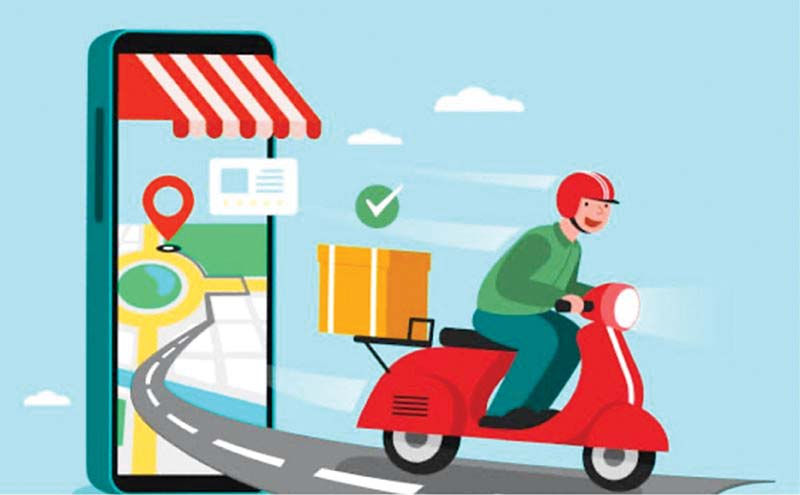In Quick Commerce We Trust: Welcome to the Ministry of Instant Gratification
- Sneha Johari

- Apr 9
- 4 min read
We wanted groceries in 10 minutes. Instead, we got an identity crisis with free delivery.

Respectful public discourse isn’t exactly woven into our fabric, but a provocative photo has divided the country yet again. This time, it is Commerce Minister Piyush Goyal asking us about the price of convenience and rest assured, he’s not alone. I used to wonder who needs groceries in 10 minutes, but that was before I was seduced by the 10-minute grocery charm or racket (depending on how you see it).
Q-commerce has showcased innovations in logistics, tech-human behavioural exchanges, and retail space optimisation. But it isn’t just about getting your eggs in 10 minutes. It’s about what you’re trading off - choice, control, common sense? - that’s making us vulnerable to this irresistible impulse.
Q-commerce was not invented in India but it may be one of the few markets where it is still functional. Many Western countries have tried with varying degrees of success and failure to keep those boats afloat. Even China has some, but we’d be fools to compare India and China. Suffice to say, it is no piece of cake.
To use present-day terminology, Q-commerce is a service you didn’t know you needed until you used it. Minister Goyal’s intentions may or may not have been to evoke an emotional response, but its implications go much deeper than the startup ecosystem into a country that’s drifting where the VC money takes us. And somebody has to wake us up from our Pavlovian reveries. But before pointing any fingers, let’s look at what it reveals about us as a society.
Q-commerce can be dubbed as an optimised way to have groceries at your doorstep. Riding on the tail of the Covid pandemic and digital penetration combined with UPI, it drives one to spend more alongside increasing short-term consumption. To the untrained eye, this may appear like a good micro-economic sign, but scratch the surface and it smells more like a sugar high.
For one, not all spending may be essential and could rack up debt for some. The normalisation of instant gratification could have retaliatory effects in other aspects of one’s life, but one won’t weep over spilled milk, because within 10 minutes, another packet would have arrived.
Even though we’re not necessarily list-making shoppers with a cart and trolley, many people are cognisant about stocking their kitchens with items that are more necessary than discretionary. Maybe it’s a generational thing. Millennials and Gen Z prefer convenience over planning, and they don’t want their deliveries with a grain of salt. They want icing.
On the surface level, it may seem like a good thing that people, especially from economically weaker backgrounds, are gaining employment. But as workers operating in a perpetual “grey zone” (are they employees, contractors or platforms’ favourite “partners”) when it comes to employment status, their working conditions and labour rights don’t exactly make sexy headlines — or any headlines. While this is the bed they have chosen, they don’t need to lie in it. Gig workers across the world continue to fight for their rights, and in India, even their dignity.
Work allocations are driven by technological algorithms, and problem solving a mere hum of the machine. Workers can be barred from the platform in a heartbeat due to customer complaints or tech glitches or really anything. Nobody can tell what’s in the black box of a platform’s tech IP. Additionally, have you ever seen a delivery person drive cautiously and/or follow traffic signals? There’s your pickle. Never mind the policy.
Speaking of pickles, it’s the local kirana store uncle or aunty picking up the cheques of this convenience. Not backed by venture capitalists for whom your mind is inaccessible and probably untameable to a certain extent (think cash transactions, freedom to choose items and their quantities, freedom of prices, variety of brands), the store cannot afford to give you a 50% discount. If you observe closely, you may see a clear distinction in the price of what you’re getting online and offline. Buying on Q-commerce means you lose choice and are now effectively trapped in an online retail monoculture in a country that’s anything but mono. And that value you were seeking for the buck you’re spending? That’s just bad apples.
We’ve not touched last-mile emissions, cold storage challenges, unit economics and the dismantling of urban infrastructure yet, but you may have an idea about where this is going. This is not a criticism of Q-commerce as much as it is a question: with no VC-backing, no technological innovations and little to no difference in the goods being sold, will Q-commerce survive 20 years down the line? Is it old wine in a new bottle, with hidden costs and delivery at neck-breaking speeds? What happens when there are disruptions to supply chains (Covid-19 anyone?) in an already fragile urban infrastructure with shaky economics?
When we have answers to these questions, maybe then, we can finally eat our cake without checking if it’s available for 50 percent off — or delivered in 10.
(The writer is an independent journalist with a keen interest in environmental issues and urban ecology)





Comments